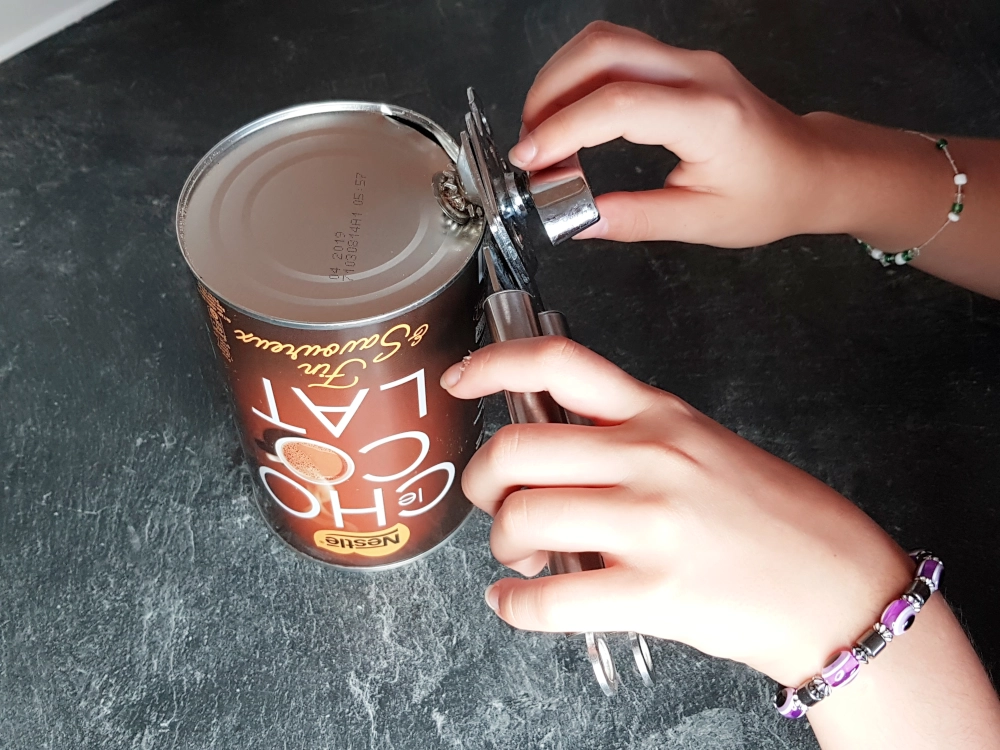
How would you like to see the sound? It’s up to you the vibrations and the play of sound waves to make salt and glitter dance to the music of your choice.
You will need:
- A cylindrical container (e.g. a tin can)
- A balloon
- A pair of scissors
- A rubber band
- Salt or chalk dust
- Music speaker

From 5 years

Difficulty : easy

This experience requires the help of an adult

Let's experiment


Cut your balloon to keep the stretchy part.


Cut out the bottom of your cylinder with a can opener. Ask an adult to help you.



Place the balloon on one end of the cylinder and secure it with a large rubber band.


Grate a chalk with a cheese grater over the balloon. Choose a colour that is visible enough for easy observation. If you don’t have any, use salt.

Place the speaker a few inches from your cylinder and start the music. Now the magic happens… watch how the chalk moves to the music you choose.

Understand the experiment

I'm muting it... and turning it back on!
Sound is caused by vibrations. When a bell rings, for example, the vibrations of the metal making up the bell are transmitted to nearby air molecules. The air molecules collide and collide with each other to create vibrations that travel through the air to our ears. In this way, the vibration creates a sound you can hear. This vibration is called a wave. It takes the shape of a sinusoid.

But if a vibration can create a sound, can a sound create a vibration in an object?
In general, the waves are too weak or too fast to be observed. But with this experiment, you notice a visible phenomenon when the music is on.
By turning up the volume and bringing the speaker closer to the tight balloon, you could observe salt or chalk dust dancing to the rhythm of the music. This is because the sound made the membrane of the stretched balloon vibrate.
If the sound is too weak, you can see that nothing is happening. The same applies if it is too loud. In reality, salt or dust reacts to the number of vibrations per second, which are called frequencies. Just like the radio. They are measured in Hertz (Hz).
Your eardrum, a vibrating membrane.
Just like the balloon membrane, your eardrum is also a thin, taut membrane located at the entrance to your middle ear. When you listen to a sound, sound waves hit your membrane and make it vibrate. These vibrations from the eardrum then translate into electrical signals sent to the brain. It is your brain that has the job of deciphering the sounds.
Did you know?
Humans pick up waves of frequencies between 20 and 20,000 Hz. While dogs can hear much higher frequencies up to 45,000 Hz.


Prepare an orange caviar
Use molecular chemistry to create foods with unexpected shapes. Do you think making orange juice beads is impossible? This is without counting on the properties of Agar, a natural molecule capable of gelling all liquids. Transform yourself into a molecular chemist to surprise your friends with your edible creations. […]

Hands full of germs
Washing your hands before eating is necessary to eliminate parasites invisible to the naked eye. Is it enough to put them underwater or is soap necessary? Thanks to the glitter, make this fun experience at home. […]

The illusion of the silver egg
A breathtaking illusion in which you will change the shell of an egg into silver. Long live physics. […]

